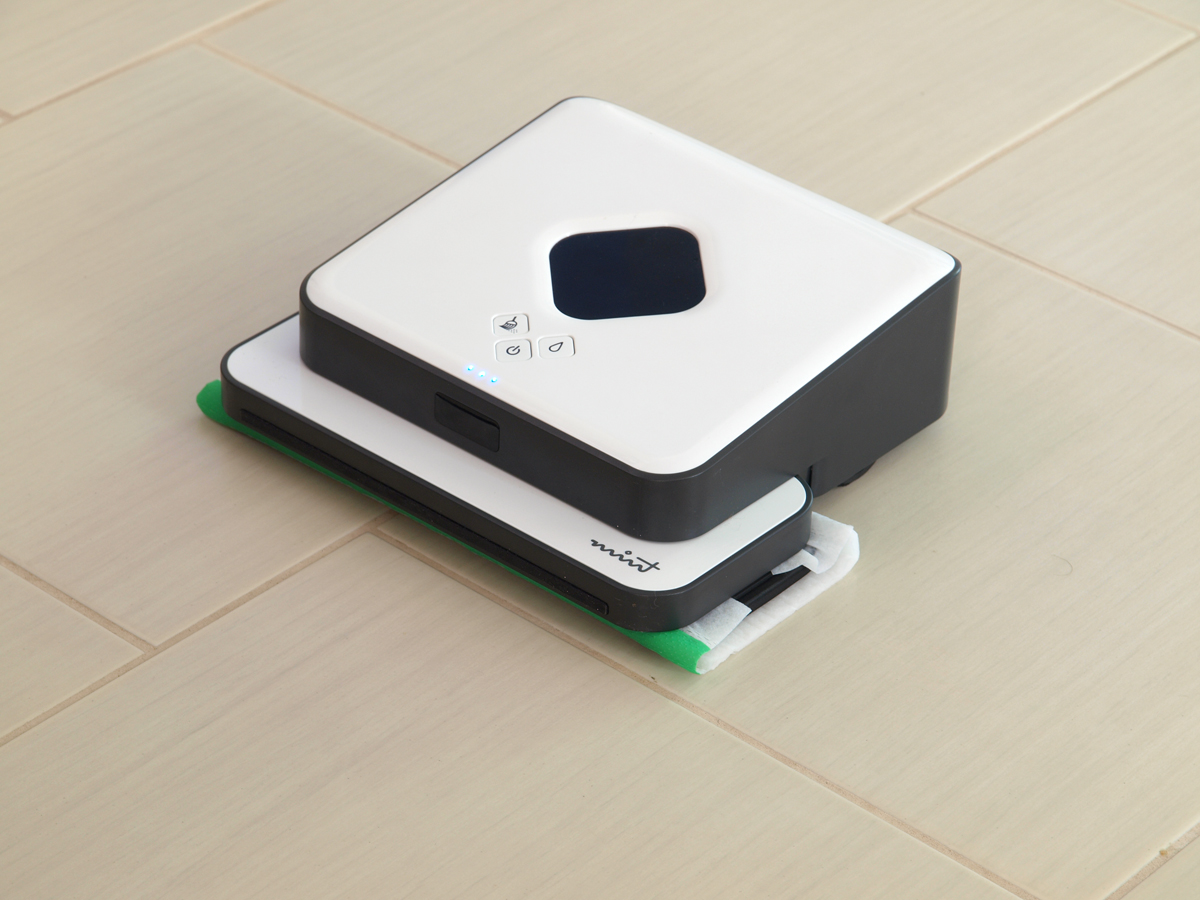|
Autonomous Research Robot
The Denning Mobile Robot Company of Boston was the first company to offer ready-made autonomous robots that were subsequently purchased primarily by researchers. Grinnell More's Real World Interface, Inc. (RWI) and James Slater's Nomadic Technologies (United States, US), along with Francesco Mondada's K-Team (Switzerland), were other pioneering companies in this field, addressing the need for ready-made robots for use by robotics researchers. RWI created the B-21, Nomadic the XR4000, whilst the tiny Khepera mobile robot emerged from the stables of the Swiss K-Team. However, the high price of these machines meant that only a few graduate students and military researchers could afford them. Eventually, the low-cost Pioneer robot was introduced in 1995 (from a collaboration between RWI and ActivMedia Robotics), a project that expanded research in mobile robotics due to the affordable price. History By 1999, the Denning company was defunct. In 1998, RWI joined with ISRobotics to f ... [...More Info...] [...Related Items...] OR: [Wikipedia] [Google] [Baidu] |
Boston
Boston (), officially the City of Boston, is the state capital and most populous city of the Commonwealth of Massachusetts, as well as the cultural and financial center of the New England region of the United States. It is the 24th- most populous city in the country. The city boundaries encompass an area of about and a population of 675,647 as of 2020. It is the seat of Suffolk County (although the county government was disbanded on July 1, 1999). The city is the economic and cultural anchor of a substantially larger metropolitan area known as Greater Boston, a metropolitan statistical area (MSA) home to a census-estimated 4.8 million people in 2016 and ranking as the tenth-largest MSA in the country. A broader combined statistical area (CSA), generally corresponding to the commuting area and including Providence, Rhode Island, is home to approximately 8.2 million people, making it the sixth most populous in the United States. Boston is one of the oldest ... [...More Info...] [...Related Items...] OR: [Wikipedia] [Google] [Baidu] |
Evolution Robotics
Evolution Robotics was an American technological company based in Pasadena, California. It specialized in robotics technologies with their product range covering computer vision, localization and autonomous navigation. Evolution Robotics cooperated with Cambridge University for research in vision technology. Software products of Evolution Robotics were licensed by the Korean Institute of Industrial Technology and the Sony Robotics Division and were part of WowWee robots like ''Rovio''. On September 17, 2012 it was announced that Evolution Robotics was acquired by iRobot iRobot Corporation is an American technology company that designs and builds consumer robots. It was founded in 1990 by three members of MIT's Artificial Intelligence Lab, who designed robots for space exploration and military defense. The com ... for $74 Million. Products In January 2010, Evolution Robotics released ''Mint'', a cleaning robot which dusts and wet-mops hard surface floors. The robot' ... [...More Info...] [...Related Items...] OR: [Wikipedia] [Google] [Baidu] |
Radio Beacon
In navigation, a radio beacon or radiobeacon is a kind of beacon, a device that marks a fixed location and allows direction-finding equipment to find relative bearing. But instead of employing visible light, radio beacons transmit electromagnetic radiation in the radio wave band. They are used for direction-finding systems on ships, aircraft and vehicles. Radio beacons transmit a continuous or periodic radio signal with limited information (for example, its identification or location) on a specified radio frequency. Occasionally, the beacon's transmission includes other information, such as telemetric or meteorological data. Radio beacons have many applications, including air and sea navigation, propagation research, robotic mapping, radio-frequency identification (RFID), near-field communication (NFC) and indoor navigation, as with real-time locating systems (RTLS) like Syledis or simultaneous localization and mapping (SLAM). Types Radio-navigation beacons The mo ... [...More Info...] [...Related Items...] OR: [Wikipedia] [Google] [Baidu] |
Jerry-rig
In maritime transport terms, and most commonly in sailing, jury-rigged is an adjective, a noun, and a verb. It can describe the actions of temporary makeshift running repairs made with only the tools and materials on board; and the subsequent results thereof. The origin of jury-rigged and jury-rigging lies in such efforts done on boats and ships, characteristically sail powered to begin with. Jury-rigging can be applied to any part of a ship; be it its super-structure (hull, decks), propulsion systems (mast, sails, rigging, engine, transmission, propeller), or controls ( helm, rudder, centreboard, daggerboards, rigging). Similarly, after a dismasting, a replacement mast, often referred to as a jury mast (and if necessary, yard) would be fashioned, and stayed to allow a watercraft to resume making way. Etymology The phrase 'jury-rigged' has been in use since at least 1788. The adjectival use of 'jury', in the sense of makeshift or temporary, has been said to date from at leas ... [...More Info...] [...Related Items...] OR: [Wikipedia] [Google] [Baidu] |
Accelerometer
An accelerometer is a tool that measures proper acceleration. Proper acceleration is the acceleration (the rate of change of velocity) of a body in its own instantaneous rest frame; this is different from coordinate acceleration, which is acceleration in a fixed coordinate system. For example, an accelerometer at rest on the surface of the Earth will measure an acceleration due to Earth's gravity, straight upwards (by definition) of g ≈ 9.81 m/s2. By contrast, accelerometers in free fall (falling toward the center of the Earth at a rate of about 9.81 m/s2) will measure zero. Accelerometers have many uses in industry and science. Highly sensitive accelerometers are used in inertial navigation systems for aircraft and missiles. Vibration in rotating machines is monitored by accelerometers. They are used in tablet computers and digital cameras so that images on screens are always displayed upright. In unmanned aerial vehicles, accelerometers help to stabilise flig ... [...More Info...] [...Related Items...] OR: [Wikipedia] [Google] [Baidu] |
Rate Gyro
A rate gyro is a type of gyroscope, which rather than indicating direction, indicates the rate of change of angle with time. If a gyro has only one gimbal ring, with consequently only one plane of freedom, it can be adapted for use as a rate gyro to measure a rate of angular movement. Rate gyros are used in rate integrating gyroscopes, and in attitude control systems for vehicles, and in combination with other sensors to make inertial navigation systems. The advantage of rate gyros over other types of gyros is the fast response rate and their relatively low cost. Principles Spinning The traditional type of rate gyro employs relatively conventional gyroscopes with viscous couplings to transfer the spin rate to allow it to be read. US Dynamics Rate Gyroscope Technical Brief Vibrating structure gyroscope {{main, Vibrating structure gyroscope MEMS gyros are cheap and have no moving parts. They often work by sonic resonance effects driven by piezoelectric Piezoelectricity (, ) is t ... [...More Info...] [...Related Items...] OR: [Wikipedia] [Google] [Baidu] |
Dead Reckoning
In navigation, dead reckoning is the process of calculating current position of some moving object by using a previously determined position, or fix, and then incorporating estimates of speed, heading direction, and course over elapsed time. The corresponding term in biology, used to describe the processes by which animals update their estimates of position or heading, is path integration. Dead reckoning is subject to cumulative errors. Advances in navigational aids that give accurate information on position, in particular satellite navigation using the Global Positioning System, have made simple dead reckoning by humans obsolete for most purposes. However, inertial navigation systems, which provide very accurate directional information, use dead reckoning and are very widely applied. Etymology The term "dead reckoning" was not originally used to abbreviate "deduced reckoning," nor is it a misspelling of the term "ded reckoning." The use of "ded" or "deduced reckoning" ... [...More Info...] [...Related Items...] OR: [Wikipedia] [Google] [Baidu] |
Robot Localization
Robot localization denotes the robot's ability to establish its own position and orientation within the frame of reference. Path planning is effectively an extension of localisation, in that it requires the determination of the robot's current position and a position of a goal location, both within the same frame of reference or coordinates. Map building can be in the shape of a metric map or any notation describing locations in the robot frame of reference. For any mobile device, the ability to navigate in its environment is important. Avoiding dangerous situations such as collisions and unsafe conditions (temperature, radiation, exposure to weather, etc.) comes first, but if the robot has a purpose that relates to specific places in the robot environment, it must find those places. This article will present an overview of the skill of navigation and try to identify the basic blocks of a robot navigation system, types of navigation systems, and closer look at its related building ... [...More Info...] [...Related Items...] OR: [Wikipedia] [Google] [Baidu] |
Industrial Robot
An industrial robot is a robot system used for manufacturing. Industrial robots are automated, programmable and capable of movement on three or more axes. Typical applications of robots include welding, painting, assembly, disassembly, pick and place for printed circuit boards, packaging and labeling, palletizing, product inspection, and testing; all accomplished with high endurance, speed, and precision. They can assist in material handling. In the year 2020, an estimated 1.64 million industrial robots were in operation worldwide according to International Federation of Robotics (IFR). Types and features There are six types of industrial robots. Articulated robots Articulated robots are the most common industrial robots. They look like a human arm, which is why they are also called robotic arm or manipulator arm. Their articulations with several degrees of freedom allow the articulated arms a wide range of movements. Cartesian coordinate robots Cartesian ro ... [...More Info...] [...Related Items...] OR: [Wikipedia] [Google] [Baidu] |
Digital Signal Processor
A digital signal processor (DSP) is a specialized microprocessor chip, with its architecture optimized for the operational needs of digital signal processing. DSPs are fabricated on MOS integrated circuit chips. They are widely used in audio signal processing, telecommunications, digital image processing, radar, sonar and speech recognition systems, and in common consumer electronic devices such as mobile phones, disk drives and high-definition television (HDTV) products. The goal of a DSP is usually to measure, filter or compress continuous real-world analog signals. Most general-purpose microprocessors can also execute digital signal processing algorithms successfully, but may not be able to keep up with such processing continuously in real-time. Also, dedicated DSPs usually have better power efficiency, thus they are more suitable in portable devices such as mobile phones because of power consumption constraints. DSPs often use special memory architectures that are a ... [...More Info...] [...Related Items...] OR: [Wikipedia] [Google] [Baidu] |
Khepera Mobile Robot
The Khepera is a small (5.5 cm) differential wheeled mobile robot that was developed at the LAMI laboratory of Professor Jean-Daniel Nicoud at EPFL (Lausanne, Switzerland) in the mid 1990s. It was developed by Edo. Franzi, Francesco Mondada, André Guignard and others. Small, fast, and architectured around a Motorola 68331, it has served researchers for 10 years, widely used by over 500 universities worldwide. Scientific impact The Khepera was sold to a thousand research labs and featured on the cover of the 31 August 2000 issue of Nature. It appeared again in a 2003 article. The Khepera helped in the emergence of evolutionary robotics. Technical details Original version * Diameter: 55 mm * Height: 30 mm * Empty weight: 80 g * Speed: 0.02 to 1.0 m/s * Autonomy: 45 minutes moving * Motorola 68331 CPU @ 16 MHz * 256 KB RAM * 512 KB EEPROM * Running µKOS RTOS * 2 DC brushed servo motors with incremental encoders * 8 infrared Infrared (I ... [...More Info...] [...Related Items...] OR: [Wikipedia] [Google] [Baidu] |






